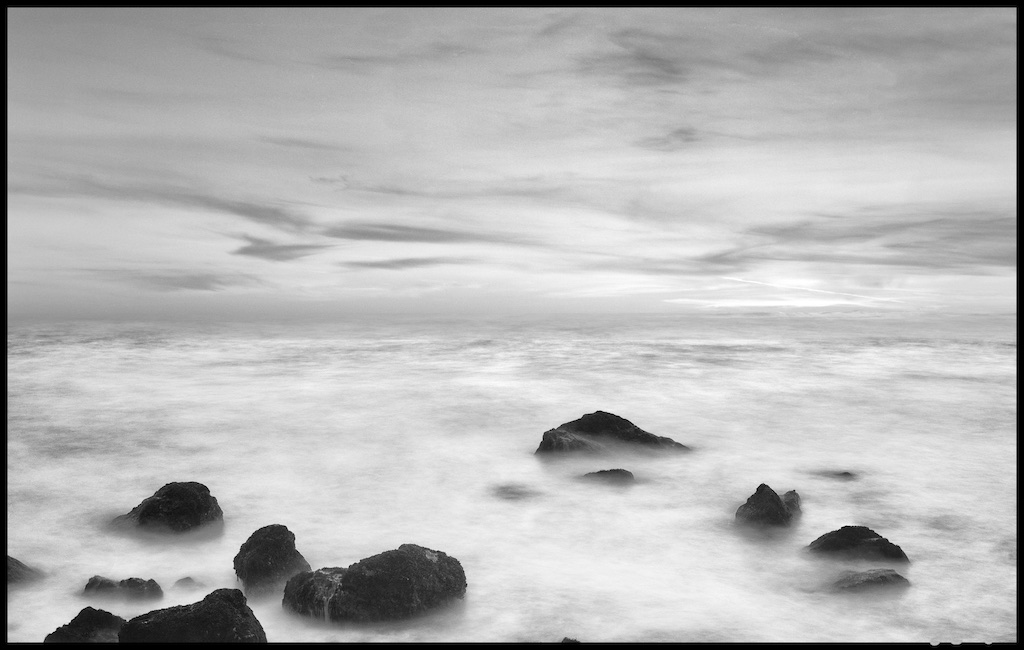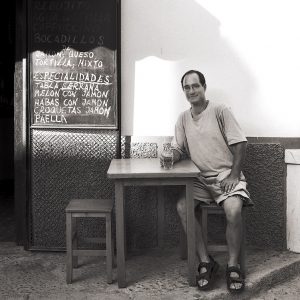Alan Blaustein • Interview by Jim Kahnweiler on January 2024 for the About Light Photography Workshop San Francisco Bay Area program
How did you get started in Photography?
As part of my basic art education in high school.
In college I studied painting, art history, music, drawing, traditional printmaking (screen printing, lithography and etching), music theory as well photography.
Early on I started to master and specialized in antique photographic printmaking techniques like the Gum Bichromate and Platinum and Palladium printing processes. At that point I transferred from an art college to Rochester Institute Of Technology to seriously pursue photography at an advanced level and obtain a BFA degree.
I started my career as junior art director at Bloomingdale’s, NYC. After two years I returned back to graduate school for an MFA in photography and art history. I Received a scholarship and my first semester in graduate school and started to teach a class in Antique Photographic Processes. By the second semester I was teaching 4 classes at various levels. I continued for 20+ years to teach photography at the BFA and MFA levels at 3 different colleges and universities. As my commercial and fine art photography started to occupy most of my time I decided to take a break from education to pursue my commercial and fine art photography full time and start a family.
What inspires you?
Listening to different types of music to help motivate me accordingly to my mood. From Bill Evans, Bill Monroe to Bach to Jimi Hendrix.
Witnessing the transitions from dawn and dusk on the landscape.
Visiting a museum or gallery to view and experience firsthand some of the artists I had studied and that I admire.
When you are shooting travel photos, how do you plan to shoot a subject? For instance, the Golden Gate Bridge or Piazza San Marco?
All possible basic needs are prepared in advance: We are always ready with gear for rain, cold weather, wading boots for the swamp lands etc…
I always bring more equipment than necessary for backup solutions. I never leave to photograph without a tripod.
Location scout beforehand if possible. Sometimes viewing other images captured from the from the same location is helpful. Other times it is refreshing to arrive without any preconcieved influences or expectations.
When opportunity meets preparation luck happens and then your chances are increased to produce successful images.
Also Keeping an open mind to the situation. Very rarely do things turn out exactly how you plan them. Especially in a mainstream destination location. Adapt to the environmental conditions and be in the moment and don’t get stressed over variables and situations impossible to predict or control.
What do you look for when taking a picture?
First starting off the process with some kind of inspiration and idea in back of my mind. Then I attempt to create a visual combination of a dynamic composition intensified with a prefect alluring quality of light which helps portray and amplify the mood of the subject matter and original my intent.
For me it doesn’t matter if I am photographing a commercial assignment or personal project.
My approaches are almost identical. The only difference is that for a personal project I am the art director vs. taking instructions from a creative or art director or client. Even when I am photographing a personal project in back of my mind I am thinking of possible ways to market, display and format my project.
Also I am usually not concerned with how much time it will take to complete the shot, how much equipment I will need to carry, if I am hungry, thirsty or if I need an espresso. Sometimes the images turn out perfect the first take and other times I choose to endlessly return to the set or location and reshoot the same set up or landscape many times under different lighting conditions and times of day until I am satisfied.
What’s your teaching philosophy? What do you emphasize when teaching? How do you encourage your students?
Find out what personally interests the students and have them enter a comfortable portal of that familiar environment. Then they can start to explore ways to visually create a photographic body of work within their interests and comfort zone.
If the student is a dancer, maybe they can have access to that world and photograph performances rehearsals etc……
If student is a musician, they can start to photograph a series of portraits featuring their musician friends, fans or performances.
If the student is a chef, perhaps they can start to learn how to prepare and style and light their dishes to be photographed etc…..
Photography is a very technical craft. You can have all the great ideas in the world but if you don’t know how to execute a style of lighting, composition that enhances your concept you will have limitations that sooner or later will decay the origin of your visual end product.
Once you master the technical means of photography you can fully start to execute more effective imagery. Then you can concentrate on achieving better control of the variables, such as image content, lighting, composition and design, color schemes etc… At that point the chances are far better for the photographer to start generating consistently more effective imagery.
In addition to the creative process I believe that it is necessary to learn and master the technical theory behind your photography either little by little or by being immersed in an educational program.
I have designed this special 7 day intensive About light Photo Workshop program with all of this in mind. Featuring daily simplified lighting and photography demonstrations and student photo shoots at key locations during the times of the day when the lighting is most effective. We will offer participatory demo’s on location lighting techniques, critiques and photoshop and lightroom sessions. By guiding the students along with this comprehensive photographic workshop experience we will elevate and improve the individual students photographic skills and image making potential. The workshop students will then have enhanced abilities in the future to create more effective photographs with emotion, impact and feeling. Our goal is to ascetically spark the creativity in the workshop attendee’s and have the them learn some necessary methods to help them create more effective photographs in the future.
Name three of your favorite photographers and what is important about their images?
Walker Evans, Irving Penn and Edward Weston because they were both able to combine a documentary, still life and landscape style with pure artistic concerns. In addition they both took on commercial photography projects as well.
Alfred Stieglitz for his dedication and contribution to establishing photography as valid art form.
Robert Demachy I always admired because he had successfully combined photography with a pictorial painterly technique and Demachy had a unique romantic impressionistic sensitivity to lighting.
What location photo equipment do you use ? Computer? Software?
Fuji 6cm X 17CM panoramic camera with a 90MM, 180MM and 300MM lens.
Toyo 4″×5” field camera, 90MM and 150MM Schneider and Nikkor lens.
Hasselblad 120 500CSM camera with a 50mm, 80MM, 150mm, 240mm lens and a set of 3 extension tubes for close ups.
FP4 B/W ilford film in 4” x 5” and 120CM formats.
Nikon digital cameras. DJI Drones.
Neutral density filters, cable releases, Gitzo tripods, small and larger portable reflectors: diffusion, silver, gold and white. Gaffer tape white and black.
I use Aperture, Lightroom, Nik Collection, and Photoshop. I like Aperture because it is the quickest way for me to apply selective color to images B/W or color which I seem apply often.
I work with 2 Apple computers and 2 Mac laptops and have several Epson scanners and printers.

